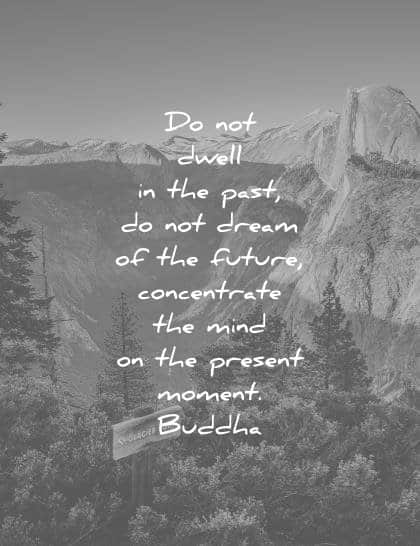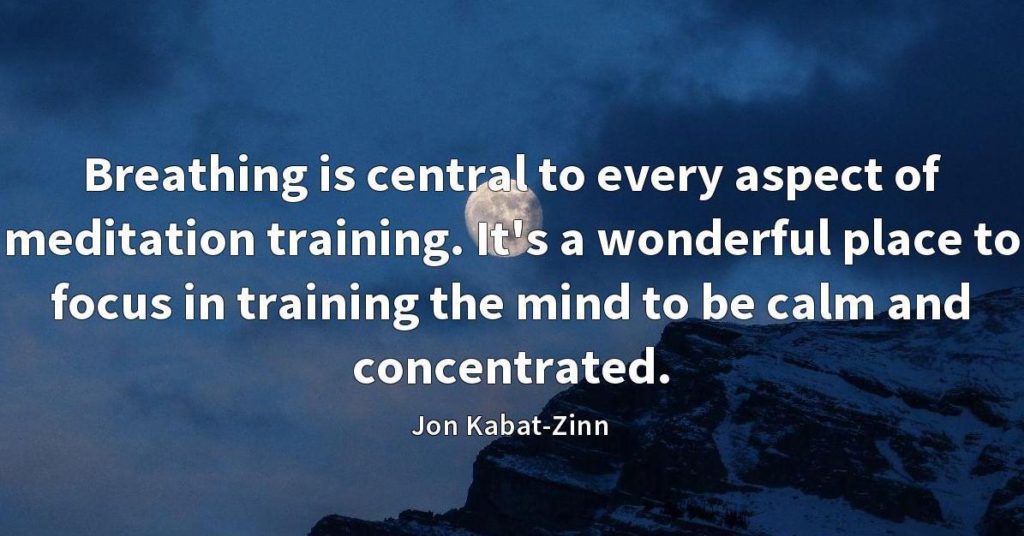One of the many benefits of developing a meditation practice is the opportunity to hone your focus and improve concentration. This skill can be applied to a variety of situations, whether you’re trying to quiet your mind, let go of past negativity, or focus on an immediate need or work-related task.
While just about any form of meditation can help you to increase your ability to concentrate, there are also a number of specific exercises you can use to work directly on this skill.
In this post I’ll outline four of my favorites, and teach you how you can begin applying these exercises to gain control over your thoughts.
Related Post: Guided Meditation for Focus and Concentration.

Exercise #1: Allow Your Mind To Wander
Believe it or not, the first technique you can use to help improve your concentration is simply to allow your mind to wander.
While it may seem counterintuitive, this strategy works really well because most of the time when we are trying unsuccessfully to focus on a task at hand, we actually build resistance against our own concentration.
By giving yourself space, and allowing the mind to wander, you tell your mind that it’s ok to run through the pent up energy first. Often, once it has wandered for a few moments, you’ll find it easier to reel your thoughts back in and apply them to your chosen subject.
However, the more important aspect of this exercise is that it gives you the opportunity to observe your thoughts, without placing judgment upon them. When you give your mind permission to wander, you can more easily take a step back and notice where it goes.
With some practice, you can learn to stop patterns in how you think, and observe what types of thoughts trigger other chains of thinking, which may be preventing you from developing a stronger sense of focus.
Exercise #2: Concentrate on a Goal
The next technique is simply to concentrate on a goal that’s important to you. For this exercise to work, you should concentrate on a goal about which you are passionate and excited.
The key here is to allow the energy of your excitement to carry your thoughts forward.
As you begin to focus on the positive aspects of your goal, you’ll find that your mind will begin to search for new links, connections, and opportunities associated with it. While this probably won’t feel like the form of focus you’re used to, it can be a powerful alternative.
For many people, what arises when you work with this exercise is a broader, more divergent feeling of focus. This more general approach, which also includes a great deal of freedom for the mind, will help to spark more creative thought…and you might be surprised by the innovative solutions your mind comes up with.
Learn more about convergent and divergent focus in this post.

Exercise #3: Follow The Better Feeling Thought
The third exercise you can practice to improve your concentration with meditation is to follow your best-feeling thought.
This is a very powerful exercise that many people overlook, even though in my experience it is just as powerful as a traditional meditation practice of quieting the mind. With a bit of practice, you’ll find that this exercise can lead you into positive states of mind very quickly, as well as helping you to master what and how you think.
To do this exercise, begin by picking any thought that feels good. It does not matter what the thought is or what subject you want to focus on. Your focus for this exercise is on the emotion that’s connected with the thought, not the topic on which you want to concentrate.
When you have a good-feeling thought, repeat the idea to yourself a few times. If this is difficult, you can practice isolating a thought by speaking it out loud.
Then, release the thought, pause for a moment, and choose a new thought. The goal is to continually pick thoughts that feel a little bit better, and a little bit better.
You can practice this exercise while seated in a meditation, but you can also incorporate it into your day. You might choose to take a few quiet moments to yourself over your morning cup of coffee, apply the exercise while on your commute, or even in a few spare minutes you get throughout the day.
Related Post: Neville Goddard’s Technique for Imagining Your Goals.
Exercise #4: Quiet The Mind
The final technique you can use is to practice quieting the mind. This practice is what most people think of when they think of meditative concentration.
I’ve written elsewhere about how to quiet the mind effectively, including many different breath exercises and pranayama techniques you could use, so rather than recap them here I’ll recommend you try our free introductory course in quieting the mind.




